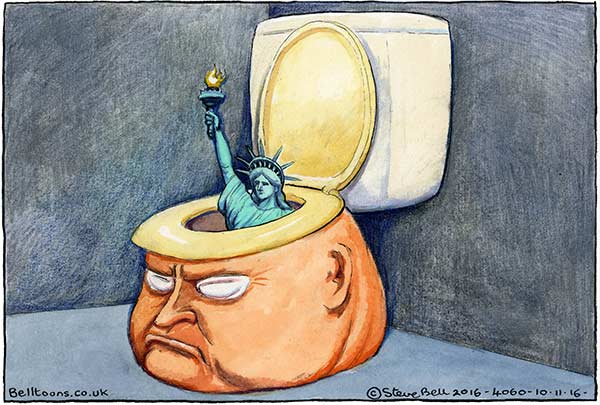Image is all-important in politics, and image-making especially so.
Politicians are supposed to create their own images, yet very often exploit negative and derogatory imagery in order to get noticed. Hitler deliberately borrowed Charlie Chaplin’s moustache, Margaret Thatcher played up to the image of the ‘Iron Lady’ wearing ‘Churchill’s Trousers’ and Donald Trump is quite prepared to take dangerous medication in order to promote the luxuriant growth of his own hair.
It seems like you couldn’t make this stuff up, but cartoonists grapple with this sort of thing each and every day.
Does visually ripping the piss out of politicians actually help them, or is it one of the very few effective ways of getting to the truth of what they are really about? Steve Bell looks at the role of the cartoonist in a post-truth world.
This lecture took place at the University of Auckland.
Steve Bell is a political cartoonist for The Guardian.
For more of our audio and visual content, check out our YouTube channel, or head to the University of Auckland’s manuscripts and archives collection.
Disclaimer: The ideas expressed in this lecture reflect the views of the lecturer and not necessarily the views of The Big Q.
You might also like:

